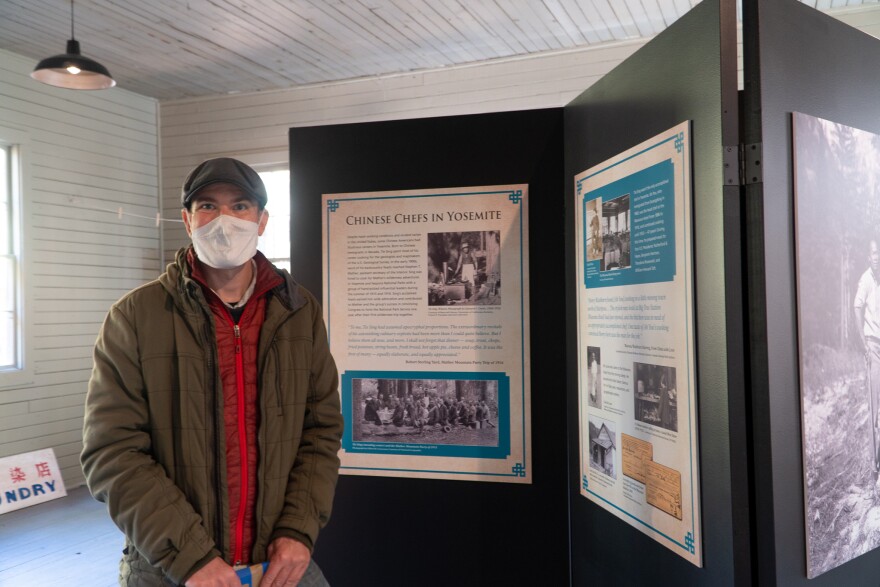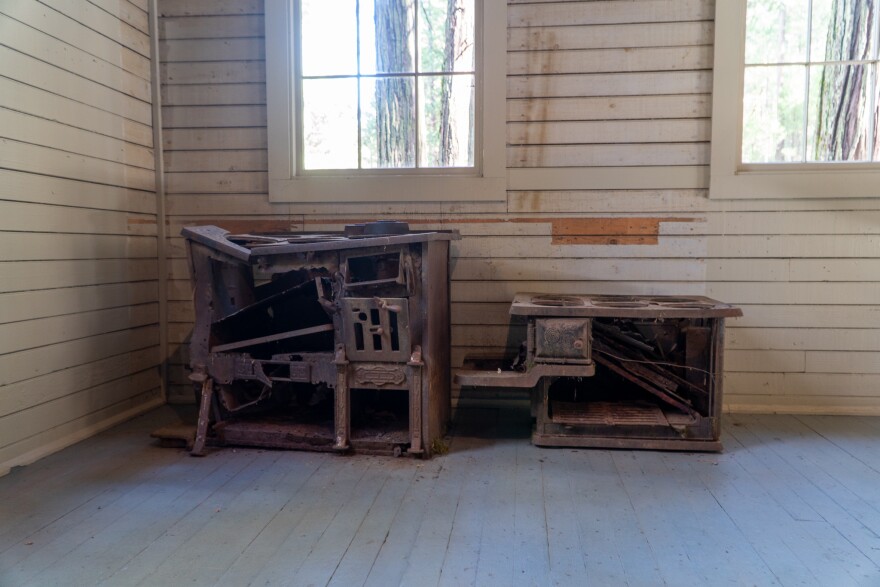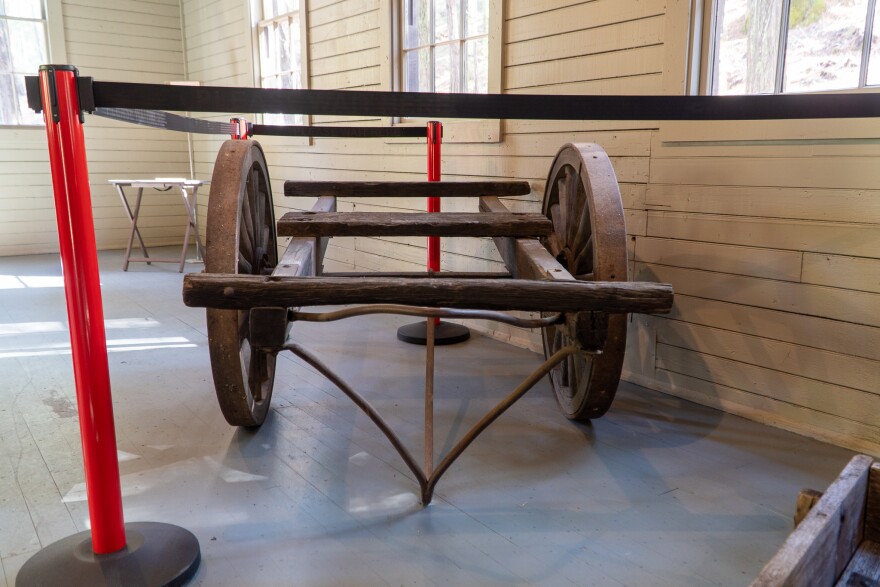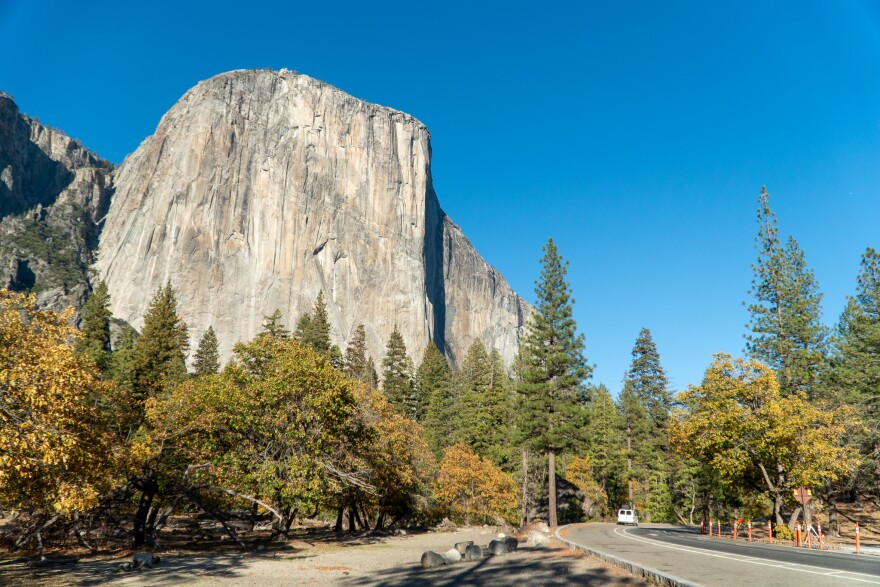Ranger Adam Ramsey, the Supervisor for Wawona District Interpretation, was one of the researchers who poured over archives in Yosemite National Park’s library to find names and dates connected to the Chinese Laundry building.
Ramsey unlocks the door to the small brown building on Forest Drive, near the Wawona Hotel.
“So the first thing that people see when they walk in are these first exhibits here,” he says, surveying the industrial rectangular room filled with informational panels staggered throughout the space.

The exhibits and artifacts inside detail the early history of Chinese immigrants in Yosemite.
“The building was originally constructed as a laundry facility for the Wawona Hotel,” Ramsey says.
The laundry operated from 1918 to the early 1930’s. The people who worked here were primarily Chinese immigrants who came to California during the Gold Rush.
The building itself has been restored and was just re-dedicated and unveiled as an exhibit in October.
Ramsey says the goal when it reopens in April is to recreate the interior to look like a laundry facility from the time period. Many of the details came from a member of the Washburn family, who established the Wawona community. The family hired mostly Chinese immigrants and the daughter of the hotel owner, Wawona Washburn, kept detailed journals.
They included “firsthand accounts of what it was like in this building,” says Ramsey, for example that “she watched them taking irons off of a wood burning stove and using them to iron clothes and sheets.” Ramsey motions to a pair of rusted iron stoves and tests out the stove’s squeaky doors.

“You can see they were in kind of a rough state. They were sitting outside for decades,” Ramsey says.
In fact, the stoves may have been outside for as long as 80 years. They’ll be restored as part of next year’s project.
In another corner of the exhibit, a large and sturdy wooden hand cart is sectioned off. Ramsey says it’s an example of what many Chinese immigrants used to build some of Yosemite’s main roads.
“You can get from Fresno to Yosemite Valley in less than three hours because Chinese workers hauled this cart around and tools and built it all by hand,” Ramsey says. “Pretty amazing.”
That’s another big part of Yosemite’s untold history: the hundreds of Chinese workers who built main roads like Tioga Pass and Wawona Road.
“The whole route between here and Yosemite Valley is just this really improbable, twisty and turvy road,” Ramsey says.

Researchers found out these workers built the road during the winter using blasting powder and hand tools such as pickaxes and shovels - and finished it in just four-and-a-half months.
“The speed at which they pulled it off, I think, is a real testament to the skill of the workers who did this,” Ramsey says.
Honoring memories was the driving force that helped fund this history project. A couple from Sacramento, Sandra Yee, 86, and her husband donated the first pot of money that was used to start the project.
“I just feel so great to be part of that,” Yee says.
Yee recalled her family’s deep history with Yosemite. Her parents were Chinese immigrants who ran a small grocery business during the Great Depression. Yee says after saving up enough money to take their first family vacation, her father decided to go to Yosemite.
“He just was blown away by how majestic and how magnificent Yosemite was,” Yee says.
It was then, Yee says, that Yosemite became a huge part of her family’s life.
“He swore from that year on that he was going to return to Yosemite every single summer and you know, he did,” she says.

Yee says her dad eventually saved enough money to buy a small cabin in Yosemite, and the laundry building was something she always passed by.
“There was this building that was completely neglected at the beginning of the road and we were told then that it was a Chinese Laundry,” Yee recalls the first year her family bought the cabin in 1953.
Yee credits some of Yosemite’s rangers with getting her interested in the project, like Yenyen Chan who did detailed research on the Chinese in Yosemite. Yee says she knew it was a project she wanted to be a part of. When they later became members of the Yosemite Conservancy, a non profit partner that funds special projects, Yee and her husband were able to make an impact with donations.
“My husband and I wanted to do something not only to commemorate my parents' love for Yosemite and the legacy they left for our family, but also to memorialize the Chinese, the early Chinese who did such monumental work,” Yee says.
Former California State Park Superintendent Jack Shu from La Mesa, found out about the hidden history 10 years ago in a video by the Yosemite Conservancy.
“That video said so much about the Chinese contributions that I had never heard about,” Shu says. He was also inspired to make an annual pilgrimage in Yosemite.
“I made a commitment to at least hike up Sing Peak 10 times,” he says.
Sing Peak is named after a famous backcountry chef, Tie Sing, who was pivotal to the park’s history, cooking elaborate dinners for dignitaries who came to visit. The tenth hike will happen next summer, when Shu turns 70.
People expect to have the pilgrimage now. They anticipate it. They want to have it happen again,” he says.
He'll be joined by a group of other people who became interested after the first time he did it. Shu says he now feels more a part of the park’s history.
“And I believe it does have an effect on how all Americans see Chinese Americans, that we're not foreigners, that Chinese have been a part of the fabric of this country, have contributed towards it for many, many generations,” he says.

A Yosemite spokesperson says it’s the park’s responsibility and privilege to retell the stories of those who worked and found a new life here. A future project at the Yosemite History Center in Wawona will focus on the narratives of Buffalo Soldiers, Black soldiers segregated in the U.S. Army, who established many of the backcountry trails still used today.





